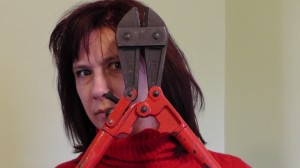Understanding Repair Estimates
Posted by admin on Mar 5, 2014 in YouBuyHouses Blog | 0 comments
If you’ve looked at any of our amazing deals (and if you haven’t, what’s wrong with you? Don’t you want to make money?), you’ve probably noticed that the repair estimates we make are very different from area to area.
Yours should be, too. Let me explain why.
Although, in a perfect world, we’d all fix up properties as if we were going to live in them-you know, copper roofs, Jacuzzi tubs with rainfall shower-heads, and so on-the reality of the investing business is that, in order to make money, we have to do the work that will raise the rents (or minimize the ongoing maintenance) or increase the sales price (or decrease the days on market) by enough to justify the repairs and upgrades.
Since each property is different, in terms of what “could” be done to it, we’ve come up with a system that, roughly, tells us what the likely exit strategy might be for any given property, what kind of buyer (retailer, landlord, turnkey rental seller) is likely to buy it from us, and therefore what level of upgrading the property will probably get.
We base our repair estimates on those assumptions, and thus our pricing, so I thought I’d take a few minutes to outline the details of the system for you.
Neighborhood types and buyer types.
We, like you, basically deal in 3 different types of neighborhoods in our day-to-day investing. They are:
1.Pure retail neighborhood-Type “A” Properties. These neighborhoods contain properties that can ONLY realistically be renovated and resold, because the neighborhood and price range are such that they’d be unlikely to cash flow as rental. These properties are in bread-and-butter or move-up areas. We call these type “A” properties. Examples of local areas that contain large numbers of these properties are Oakley, North Avondale, Hyde Park, West Chester, parts of Bridgetown, and so on.
2. Low end retail/middle end rental/lease-option neighborhoods-Type “B” Properties. These are starter homes in bread and butter areas that could be retailed, but would also cash flow as rentals or lease/option deals. These are type “B” properties, and there are a lot of neighborhoods that contain them-Forest Park, Delhi, North College Hill, Norwood, Covedale, etc.
3.Pure rental neighborhoods-Type “C” Properties. In these areas, selling to a retail buyer or even lease/optioning is not a reasonable exit strategy. They’re lower-income rentals that are purchased purely for the cash flow, or occasionally for resale as turnkey rentals. These properties are type “C”, and neighborhoods include Price Hill, Evanston, Madisonville, East Westwood, Fairmount, and others.
We recognize that these are loose descriptions of neighborhoods; in Northside, for instance, there are Type A, B, and C areas and properties all within a 2 mile radius, and in the same zipcode. In these cases, we sort of rely on 2 decades+ experience in the Cincinnati market to make a determination about the most profitable exit strategies.
So, anyway, we’ve also discovered that we have three different kinds of buyers, as categorized by HOW ya’ll get repairs done to a property. Interestingly, you loosely divide yourselves by the kinds of properties you buy. Which one are you?
1.The extreme do-it-yourselfer. If you’re in this category, you are literally hands-on with pretty much every repair there is to do to a property. DIYers, sometimes with the assistance of “helpers” (as my dad, a dyed-in-the-wool do-it-yourselfer called them), can be found any given day shingling roofs, hanging drywall, wiring, installing a furnace…not to mention the “easy” stuff like painting. The DIYers are the ones who buy trashed Type c properties from us for a few thousand dollars (no kidding, we recently sold a guy a house for $4,900…he used his credit card to buy …), put $15,000 in materials in, and rent the resulting property for $700/mo. God bless ’em.
2.The “all contractors, all the time” buyer. No calloused hands or picking drywall mud out from under YOUR fingernails (or worse, blowing drywall dust out of your nose for a week…if you’re one of these, everything from the cleanout to the mechanicals to the cosmetic details are done by paid, licensed contractors, all permits pulled, all details managed by you but not DONE by you. If this is you, you probably retail Type A properties…and good for you for not being a control freak.
3.The “some me, some them” buyer. Most of our buyers actually fall into this category. If that’s you, you leave the hard/dangerous/labor intensive/licensed stuff (wiring, plumbing, HVAC, roof) to contractors with crews and experience, but do the easy/fun/rewarding/ can be done evenings-and-weekends part (painting, hanging cabinets, tiling) yourself. You probably buy Type B deals.
So given our experience buying and selling umpteen properties (it’s in the multiple hundreds, but it cracks me up when wholesalers can say, “I’ve done 713 deals”-if you can keep track that closely, you’re not busy enough finding new deals!), we base our repair estimates on what the most likely buyer is most likely to do to maximize the profitability of any given type of property.
And This is What We Figure You’ll Do To Maximize Your Profit…
You probably buy one property at a time, but we buy an average of one a week-some for rental, some for retail, and some to wholesale.
That means that we, like you (unless of course you just let us do all the work and buy our already-evaluated great deals), look at about 20 properties and make about 20 offers to get a deal worthy of offering to you.
Imagine the challenge of viewing hundreds of properties a year and trying to figure out what you’re going to do to them, and thus what the repair costs will be, and thus what the sale price to you can be so that you make lots of money and come back for more, and thus what we can offer.
That’s why we came up with this system for evaluating properties. It makes our life easier, and lets you know HOW we “came up with those numbers”. Here we go: see how closely this relates to your actual rehab strategy.
Type A Properties are meant for retail to a homeowner. We know how picky homeowners are today, and that they don’t want to think that they’ll have ANY major repairs for the next 10 years or more. Therefore,
When looking at type A properties, we do repair estimates as if:
• All work will be done by licensed/qualified contractors
• All cosmetic issues, no matter how minor, will be resolved
• All mechanical systems will be upgraded/repaired as necessary
• Roof replaced unless <10 years old and attractive
• Furnace/ca replaced unless <10 years old
• Windows replaced unless already replaced or historic
• Cast iron soil stacks replaced
• Glass block windows in basement
• Wiring upgraded to minimum 100 amp, circuit breakers, grounded
• Kitchens and baths fully upgraded
• High-end carpet or refinished hardwood; ceramic in kitchens and baths
• “designer” paint colors
• Good landscaping
Type B properties are more of a challenge, as you might choose to retail, rent, or lease/option them. In any case, the end user is pickier about bells and whistles than renters in lower end areas. To get to the right combination of “pretty”, “working”, and “affordable”, we deal with these properties like this:
In type “B” properties, estimates are as if:
• All mechanical work will be done by licensed/qualified contractors
• All important cosmetic issues will be resolved
• All mechanical systems will be upgraded/repaired as necessary
• Roof replaced with dimensional shingle if more than 15 years old
• Furnace replaced if more than 20 years old or not working, c/a added if necessary
• Windows replaced unless already replaced or historic
• Cast iron soil stacks replaced
• Glass block windows in basement
• Wiring upgraded to minimum 100 amp, circuit breakers, at least 1 grounded outlet per room
• Kitchens and baths upgraded only if in poor condition
• medium-end carpet or refinished hardwood; ceramic in kitchens and baths UNLESS vinyl is in excellent condition
• “designer” paint colors
• Moderate landscaping
In Type C properties, the goal is rental, which means maximum cash flow, minimum maintenance problems, and the smallest possible up front investment in repairs. At the same time, a house that needs a roof needs a roof, whether it’s to be rented or resold.
After years of watching successful landlords accomplish all of these goals (while not being slumlords), we’ve discovered that long-term hold properties typically get a different treatment than properties that are intended to be resold within 5 years. Specifically, you folks who buy these properties tend to REPAIR and MAINTAIN rather than replace, where possible.
And this makes a lot of sense, financially. A new furnace is going to last 15 years and cost $1,500 whether you put it in today or 5 years from now. If you can get another 5 years out of it by spending $300 on maintenance, it makes sense to do so, because what you’re effectively doing is setting the depreciation clock back by 60 months. Once that new furnace goes in, it loses $100 a year in value. If you can wait 5 years to put it in, you’ve effectively saved that $100 a year (and, I hope, ACTUALLY saved the $1,500 replacement cost from your cash flow so that you have the reserves to replace it when it, inevitably, goes out on Christmas day).
Thus, for these kinds of properties, we estimate a little differently.
In type “C” properties, estimates are be made as if:
• Only mechanical/structural work will be done by licensed/qualified contractors
• Cosmetics will be upgraded only if absolutely necessary, otherwise repaired
• Mechanical systems will be REPAIRED unless missing, failing, or unsafe
• Roof replaced only if 18+ years old, badly degraded, or leaking
• Furnace replaced only if non-functional
• No central air
• Windows replaced only if broken, leaking, or storms/screens not present
• Plumbing replaced only if missing or failing
• Glass block windows in basement
• Wiring upgraded only if missing, service upgraded only if less than 60 amp or on fuses
• Kitchens and baths cosmetically repaired only (refinish tubs, paint cabinets)
• Low-end carpet, refinished or painted wood; ceramic in kitchens and baths only if vinyl is in poor condition
• Neutral paint for easy touchup
• No landscaping-basic yard cleanup and grass planting only
If you’ve bothered to read this far, we’d love to have your feedback on whether this system matches up to what you’re doing in real life. Leave it here, and don’t forget to check out our current money-making deals!

